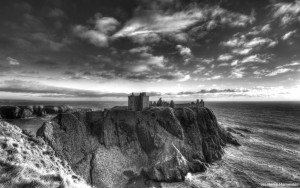Lindenfels
Lindenfels is a town in southern Hesse, Germany and known as the “Pearl of the Odenwald”. In the middle of the town stand the ruins of the Lindenfels castle with a great view into the distance over the Weschnitz valley.
Reichelsheim
Reichelsheim is a community in Hesse, Germany. It is located in the middle Odenwald and was first mentioned in 1303. The Schloss Reichenberg (Richenburg Castle) was first mentioned in 1307 and was used as a private upperclass boys’ school from 1876 to 1924. Nowadays, it is a publicly accessible international meeting and conference centre with a palace café.
Wartburg
The Wartburg is situated near Eisenach (Thuringia) and was founded in 1068 by the count of Schauenburg. In 1207 the castle became the venue of the Sängerkrieg (Minstrels’ Contest) in which Minnesänger (Walther von der Vogelweide or Wolfram von Eschenbach) took part and was treated with poetic licence in Richard Wagner’s opera Tannhäuser.
From May 1521 until March 1522, Martin Luther stayed at the castle after his excommunication by Pope Leo X and translated the New Testament into German, the first translation into a modern language.
In 1817, about 450 students came together and called for German unity. This and similar events at Wartburg during the Revolutions of 1848 are considered seminal moments in the movement for German unification.
The Landgrafenhaus (romanesque palace) is the oldest building and contains the Sängersaal (Hall of the Minstrels), which is the setting for Richard Wagners Tannhäuser.
Dunnottar Castle
Dunnotar Castle is located on a rocky hill, about 3km south of Stonehaven, Scotland. Most of the buildings are largely of the 15th–16th centuries and the castle played an important role in the scottish history, because you can overlook the shipping lanes to northern Scotland.
Crathes Castle, Aberdeenshire
Crathes Castle is a 16th century castle near Banchory in Aberdeenshire and served as the ancestral seat of the Burnetts of Leys until gifted to the National Trust for Scotland (1951). In the year 1323, the land was given as a gift to the Burnett of Leys family by King Robert the Bruce. The construction of the current tower house was begun in 1553 and finished 1596 by Alexander Burnett of Leys.
Eilean Donan Castle
The original castle was built against the Vikings in the early 13th century and was recaptured, and then demolished, by three Royal Navy frigates in May 1719. Between 1919 and 1932 the castle was restored and in 1983 The Conchra Charitable Trust was formed by the Macrae family to care for the Castle.
The island Eilean Donan is the home of the Clan Macrae and in 2001 the island had a population of one person…
… but I missed the Higlander the third time ![]()
Frankenstein Castle, Germany
The castle Frankenstein is situated about 5 km south of Darmstadt (Hesse) and was built in the year 1250. From the year 1363, the castle was splitted into two parts and owned by two different families of the Lords and knights of Frankenstein. During the 15th century the castle was “modernized” and expanded. In the 18th century the castle was falling into ruins and the two remaining towers are the historically inaccurate restorations from the 19th century.
The influence of the castle on the work of Mary Shelley (Gothic novel “Frankenstein”) aren’t grounded in facts, because she never visited the castle during her journey on the river Rhine.
Nowadays, American soldiers stationed in Darmstadt founded an annual Halloween festival at the castle. This event became one of the biggest Halloween festivals in Europe.
Eppstein Castle (Hesse), Germany
The pictures were taken in my hometown Eppstein. Eppstein is a town in Hesse (Germany), lies west of Frankfurt am Main and is at the edge of the Taunus mountains.
The ruins of the Eppstein castle were mentionend as “Ebbensten” in the year 1122 and were the home of the Lords of Eppstein, who ruled the territories of the Rhine Main area. The castle includes a museum with an old baroque altar and some books written by early travel writers who refer to Eppstein.
Now, the legend about the castle: The strong and handsome knight Eppo built the castle Eppstein and rescued the beautiful damsel Bertha from Bremthal from a giant. He slung the giant into a valley to death and took one of his ribs. You can see the rib above the castle gate (but it’s from a whale and not from a giant…)
Dunnottar Castle in Black & White
This photo was taken on an early November morning about two miles (3 km) south of Stonehaven. Dunnottar Castle is a ruined fortress located upon a rocky headland and the surviving buildings are largely of the 15th – 16th centuries. The castle plaid an important role in the history of Scotland, because of the location: it overlooked the shipping lanes to northern Scotland and on the opposite it controlled land access to the coastal south.
In the present-day, the castle was the venue of the movie “Hamlet” with Mel Gibson and Glenn Close.

